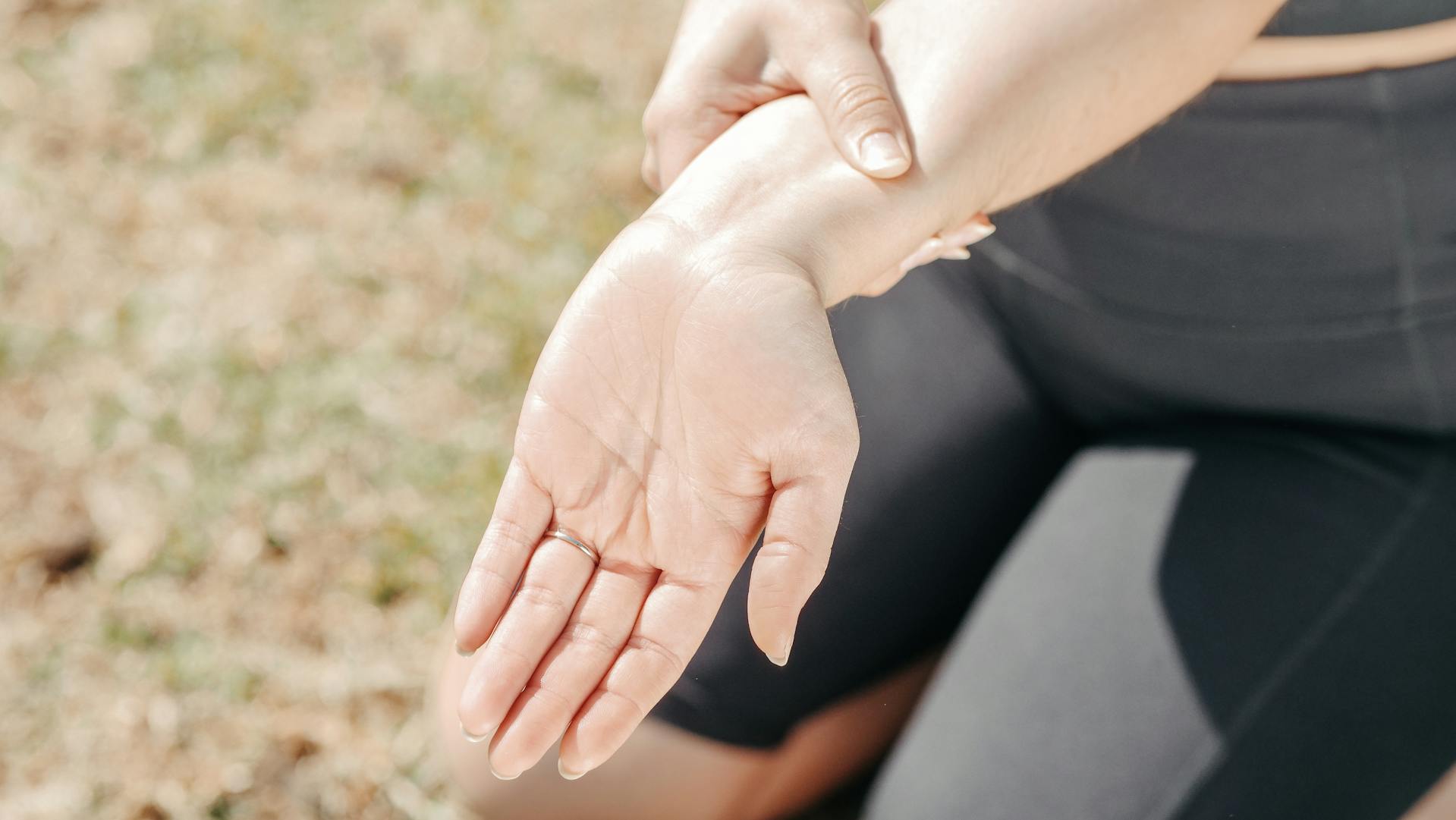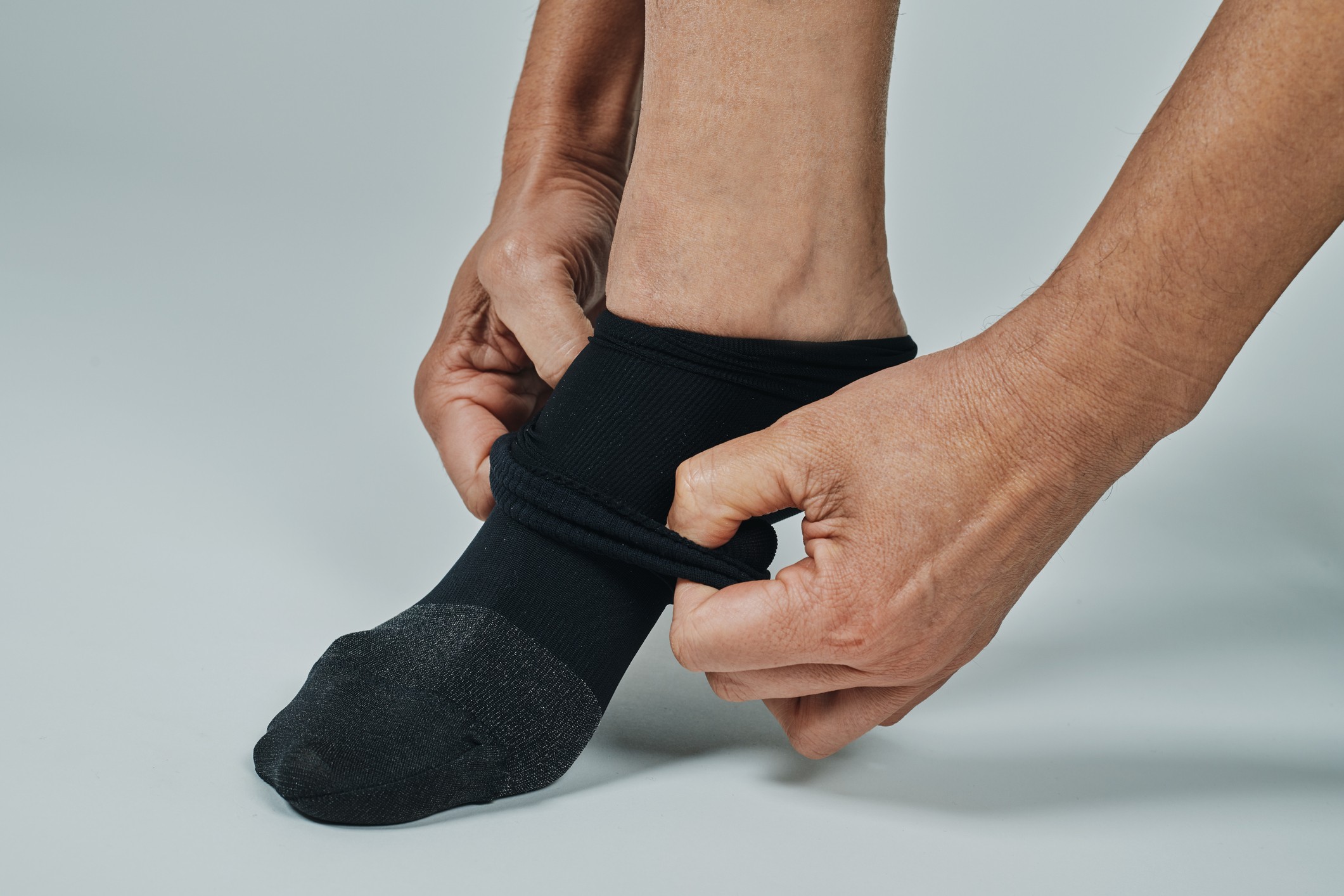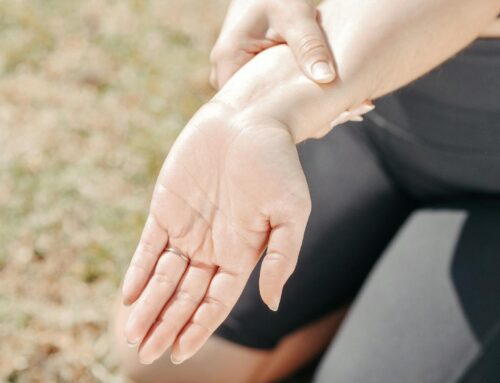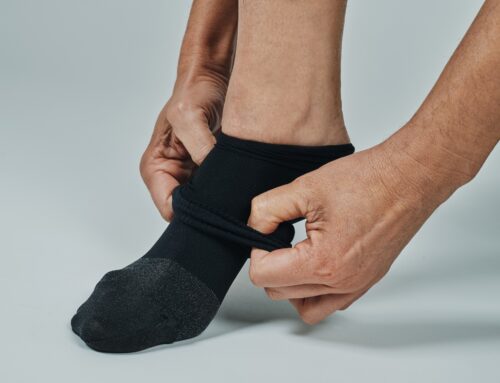Whether walking, standing, or engaging in daily activities, your feet provide the foundation for movement. Poor foot support can lead to discomfort, instability, and an increased risk of falls or injuries. Over time, improper footwear may contribute to chronic pain, joint stress, and misalignment, affecting not only your feet but also your knees, hips, and lower back. Orthopedic footwear is specifically designed to provide enhanced support, improve balance, and promote proper posture.
Unlike standard shoes, orthopedic options are crafted to align the feet correctly, distribute weight evenly, and reduce pressure points, making movement more comfortable and stable. For individuals experiencing foot pain, instability, or mobility challenges, these specialized shoes can make a significant difference in daily life.
A Chiropodist Foot Assessment in Toronto can help determine the right orthopedic footwear for your specific needs. Whether you have flat feet, high arches, or conditions like arthritis or plantar fasciitis, a chiropodist can assess your foot mechanics and recommend footwear that enhances stability and comfort.
Investing in the right shoes can improve overall foot health, reduce discomfort, and support a more active lifestyle.
Orthopedic vs. Regular Shoes
Not all shoes are created equal when it comes to foot health. While standard footwear focuses on fashion and basic comfort, orthopedic footwear is designed with biomechanics in mind, offering specialized features that support proper foot alignment, balance, and overall stability.
Why Orthopedic Footwear Offer More Than Just Comfort
Unlike regular shoes, orthopedic footwear is engineered to enhance mobility, reduce foot strain, and prevent long-term health issues. It provides targeted support where it’s needed most, ensuring that each step is cushioned and aligned for optimal comfort and stability.
Differences include:
- Enhanced Arch Support reduces pressure on the feet and promotes proper weight distribution.
- Deep Heel Cup helps stabilize the foot and improves alignment.
- Shock-Absorbing Midsoles minimizes impact on joints, preventing discomfort and fatigue.
- Wide Toe Box allows natural toe movement, preventing pressure points and reducing the risk of bunions or hammertoes.
- Rigid or Semi-Rigid Shank provides structure to maintain balance and posture.
- Slip-Resistant Outsoles improves traction and reduces the risk of slipping, especially on uneven or slippery surfaces.
- Many orthopedic shoes accommodate orthotic inserts, ensuring a tailored fit for individual needs.
Orthopedic footwear not only improves comfort and support but also prevents common foot-related conditions.
Whether you experience chronic foot pain, balance issues, or need extra stability, switching to orthopedic footwear can enhance your overall foot health and daily mobility.
Who Benefits from Orthopedic Footwear?
Orthopedic footwear isn’t just for those with severe foot conditions—it benefits a wide range of individuals, from people seeking better balance to athletes looking for extra support. Whether you experience chronic discomfort or simply want to improve your overall foot health, properly designed footwear can make a significant difference in mobility, comfort, and stability.
Individuals with Foot Pain, Arthritis, or Diabetes
Chronic foot pain can interfere with daily life, making even simple movements uncomfortable. Conditions such as plantar fasciitis, bunions, or heel spurs often worsen with improper footwear, but orthopedic shoes can provide targeted arch support and cushioning to alleviate discomfort.
For individuals with arthritis, joint stiffness and inflammation can make walking difficult. Shock-absorbing orthopedic footwear reduces impact on the joints, easing strain and promoting more comfortable movement.
Those living with diabetes often experience foot sensitivity due to neuropathy, which increases the risk of ulcers and circulation problems. Orthopedic footwear helps distribute pressure evenly, protect sensitive areas, and reduce the likelihood of foot complications, making them a crucial choice for long-term foot health.
Older Persons Looking to Improve Balance and Prevent Falls
Aging naturally leads to changes in foot structure and stability, often resulting in an increased risk of falls. The loss of natural fat padding on the soles of the feet can make walking less comfortable and reduce shock absorption.
Orthopedic shoes are designed with slip-resistant soles, deep heel cups, and structured arch support, helping older individuals maintain their balance and move with greater confidence. These features can significantly reduce the risk of falls and injuries, allowing people to stay active and independent for longer.
A Chiropodist Foot Assessment ensures that older persons receive the right orthopedic footwear tailored to their specific needs, improving overall mobility and comfort while addressing individual concerns such as swelling or joint pain.
People with Flat Feet, Overpronation, or High Arches
Individuals with flat feet often experience overpronation, where the foot rolls inward excessively, causing strain on the joints and muscles.
On the other hand, those with high arches may lack natural shock absorption, leading to increased stress on the ankles and foot joints. In both cases, orthopedic footwear helps by offering:
- Structured arch support to align the foot properly.
- Heel stability to prevent excessive motion.
- Cushioning to relieve pressure and enhance comfort.
Addressing these biomechanical issues, orthopedic shoes help correct posture and reduce long-term pain associated with improper foot alignment
Athletes and Active Individuals Needing Extra Foot Support
Physical activity places repeated stress on the feet, especially in high-impact sports like running, hiking, or basketball. Without the right footwear, athletes risk developing foot fatigue, joint pain, and even long-term injuries.
Orthopedic shoes are designed to absorb impact, distribute weight evenly, and provide extra support, helping athletes reduce fatigue and improve endurance. Many styles allow for custom orthotic inserts, offering a personalized fit that enhances comfort, prevents injuries, and promotes better performance.
Whether you’re an athlete, an older adult, or someone dealing with chronic foot pain, the right orthopedic footwear can transform how you move, feel, and function daily.
How Orthopedic Footwear Enhances Balance and Stability
Maintaining balance and stability depends on proper foot alignment and support. When shoes lack the necessary structure, weight distribution becomes uneven, leading to discomfort, fatigue, and an increased risk of falls. Orthopedic footwear is specifically designed to address these concerns, offering features that improve posture, reduce strain, and provide a solid foundation for movement.
Arch Support and Proper Weight Distribution
Orthopedic footwear provides structured arch support that prevents excessive pronation (rolling inward) or supination (rolling outward), ensuring that weight is evenly distributed across the feet. This:
- Reduces pressure on the ankles, knees, and lower back.
- Helps maintain a natural walking pattern (gait).
- Minimizes joint strain and improves overall posture.
Shock Absorption and Cushioning
Walking or standing for long periods can cause foot fatigue and joint discomfort, especially on hard surfaces. Orthopedic shoes feature shock-absorbing midsoles and cushioned footbeds that:
- Absorb impact with each step, reducing strain on the feet and joints.
- Provide extra comfort for individuals with arthritis, plantar fasciitis, or other foot conditions.
- Enhance endurance, allowing for longer periods of standing or walking without discomfort.
Slip-Resistant Outsoles for Safety
Slipping and tripping are common causes of falls, especially for individuals with balance challenges. Orthopedic footwear is designed with slip-resistant, high-traction outsoles to provide better grip on different surfaces. This:
- Prevents slipping on smooth, wet, or uneven floors.
- Increases confidence in movement, especially for those with mobility concerns.
- Reduces the risk of falls and injuries related to poor traction.
Custom Fit and Foot Orthotics Compatibility
One-size-fits-all footwear can cause pressure points, discomfort, and instability. Orthopedic shoes offer customizable features such as removable insoles, adjustable straps, and wide toe boxes, ensuring a perfect fit. Many designs also accommodate custom orthotics, providing additional personalized support.
These features:
- Improve overall foot alignment and posture.
- Prevent foot pain caused by ill-fitting shoes.
- Adapt to individual foot conditions, enhancing stability and comfort.
Features to Look for in Supportive Shoes
When selecting orthopedic footwear, it’s essential to focus on features that provide the right balance of stability, comfort, and foot alignment. The right shoes can enhance mobility, reduce strain on joints, and prevent common foot conditions.
Proper Arch Support
Good arch support is important for maintaining natural foot alignment and preventing overpronation or supination (excessive inward or outward rolling of the foot). Without proper support, foot strain can lead to knee, hip, and lower back pain. Orthopedic shoes are designed to distribute body weight evenly, alleviating pressure points and reducing discomfort during prolonged standing or walking.
Deep Heel Cup
A deep heel cup helps secure the foot in place, preventing excessive movement that can lead to instability. This feature is particularly beneficial for individuals with flat feet, plantar fasciitis, or overpronation, as it helps control motion and maintains proper alignment. A stable heel also minimizes the risk of ankle rolling, which can cause injuries or falls.
Shock Absorption
Walking and standing put constant pressure on the feet, and shock absorption reduces the impact on joints, muscles, and tendons. Orthopedic footwear typically includes cushioned insoles and padded midsoles that help reduce foot fatigue, prevent joint pain, and improve overall walking comfort. This feature is especially beneficial for individuals with arthritis, diabetes, or chronic foot pain.
Wide Toe Box
A wide toe box allows the toes to spread naturally, reducing pressure on the front of the foot. This design helps prevent and alleviate bunions, hammertoes, corns, and other foot deformities caused by tight or restrictive footwear. Extra space in the toe area also improves overall comfort, particularly for individuals who experience swelling or neuropathy.
Firm Midsole and Shank
A firm midsole and rigid or semi-rigid shank provide extra structural reinforcement, ensuring that weight is properly distributed across the foot. This is especially important for individuals who experience foot fatigue, fallen arches, or balance issues. A supportive midsole prevents excessive foot flexion, improving stability and posture while walking or standing.
Adjustable Straps or Laces
Adjustable straps, laces, or Velcro closures allow wearers to modify the tightness of the shoe to accommodate swelling, foot deformities, or the need for orthotic inserts. This ensures a snug fit that prevents slipping, rubbing, and unnecessary strain on the feet.
Slip-Resistant Outsole
Traction is an essential consideration, especially for individuals who experience balance issues or are at risk of falls. Orthopedic footwear often includes high-traction, slip-resistant outsoles that provide better grip on wet, uneven, or smooth surfaces. This feature is particularly valuable for individuals with mobility limitations, helping them walk with greater confidence and security.
A chiropodist can recommend the best orthopedic footwear or custom orthotics based on your unique foot mechanics, ensuring maximum comfort and support. Properly fitted orthopedic shoes prevent pain, improve posture, and enhance overall mobility.
Common Mistakes to Avoid When Selecting Orthopedic Shoes
Selecting orthopedic footwear is an important step toward better foot health, but making the wrong choice can lead to discomfort, instability, and even worsening foot conditions. Many people unknowingly select shoes based on style over function, improper sizing, or lack of professional guidance, which can reduce the effectiveness of orthopedic support.
To get the most out of your investment, it’s essential to choose shoes that fit correctly, provide the right level of support, and accommodate your specific foot needs. Consulting with a chiropodist can help you avoid these common mistakes and ensure you select the best footwear for long-term stability, comfort, and mobility.
- Choosing Style Over Function – Many people prioritize appearance over support, leading to long-term discomfort and foot issues. Modern orthopedic shoes offer stylish designs without compromising comfort.
- Ignoring Fit and Size – Feet change over time, so relying on old shoe sizes can result in improper support. Always measure your feet before purchasing new orthopedic footwear.
- Buying Off-the-Shelf Without Consultation – Not all orthopedic shoes are suitable for every condition. A chiropodist can guide you in selecting the best pair for your foot health needs.
- Overlooking Insoles and Orthotics Compatibility – Some shoes do not accommodate custom orthotics. If you need additional support, ensure your footwear allows for removable or adjustable insoles.
- Not Testing Shoes for Comfort and Stability – Always walk around and test the shoes before purchasing. If they feel uncomfortable or unstable in the store, they won’t improve with time.
Finding the right orthopedic footwear is more than just picking a comfortable pair of shoes—it’s about ensuring proper support, balance, and long-term foot health. Investing in the right shoes today means better movement, comfort, and stability for the future.
Walk Better, Feel Better – Stronger Steps Begin with the Right Footwear
Your feet are the foundation of movement, and the right orthopedic footwear can make all the difference in balance, stability, and overall comfort. Whether you’re dealing with chronic foot pain, struggling with posture, or simply looking for better support, investing in properly designed footwear helps reduce strain on joints, prevent injuries, and improve mobility.
By offering arch support, shock absorption, slip-resistant soles, and a customizable fit, orthopedic footwear enhances foot health and makes walking and standing more comfortable. These shoes are especially beneficial for individuals with arthritis, diabetes, flat feet, or high arches, as well as people looking to prevent falls and active individuals needing extra stability.
If you’re experiencing foot or ankle problems or simply want to ensure that you’re getting the right orthotic shoes for your needs, book a foot assessment with Care-Med.
Share This Story, Choose Your Platform!
Table of Contents
- Benefits of Orthopedic Footwear for Better Balance and Posture
- Orthopedic vs. Regular Shoes
- Who Benefits from Orthopedic Footwear?
- How Orthopedic Footwear Enhances Balance and Stability
- Features to Look for in Supportive Shoes
- Common Mistakes to Avoid When Selecting Orthopedic Shoes
- Walk Better, Feel Better – Stronger Steps Begin with the Right Footwear
We specialize in orthotics, body braces, and compression wear tailored to your unique needs in Toronto. Reach out to us at info@caremed.care or call 416-782-5353 to book your fitting and consultation.
Experience the difference of customized solutions designed just for you.











